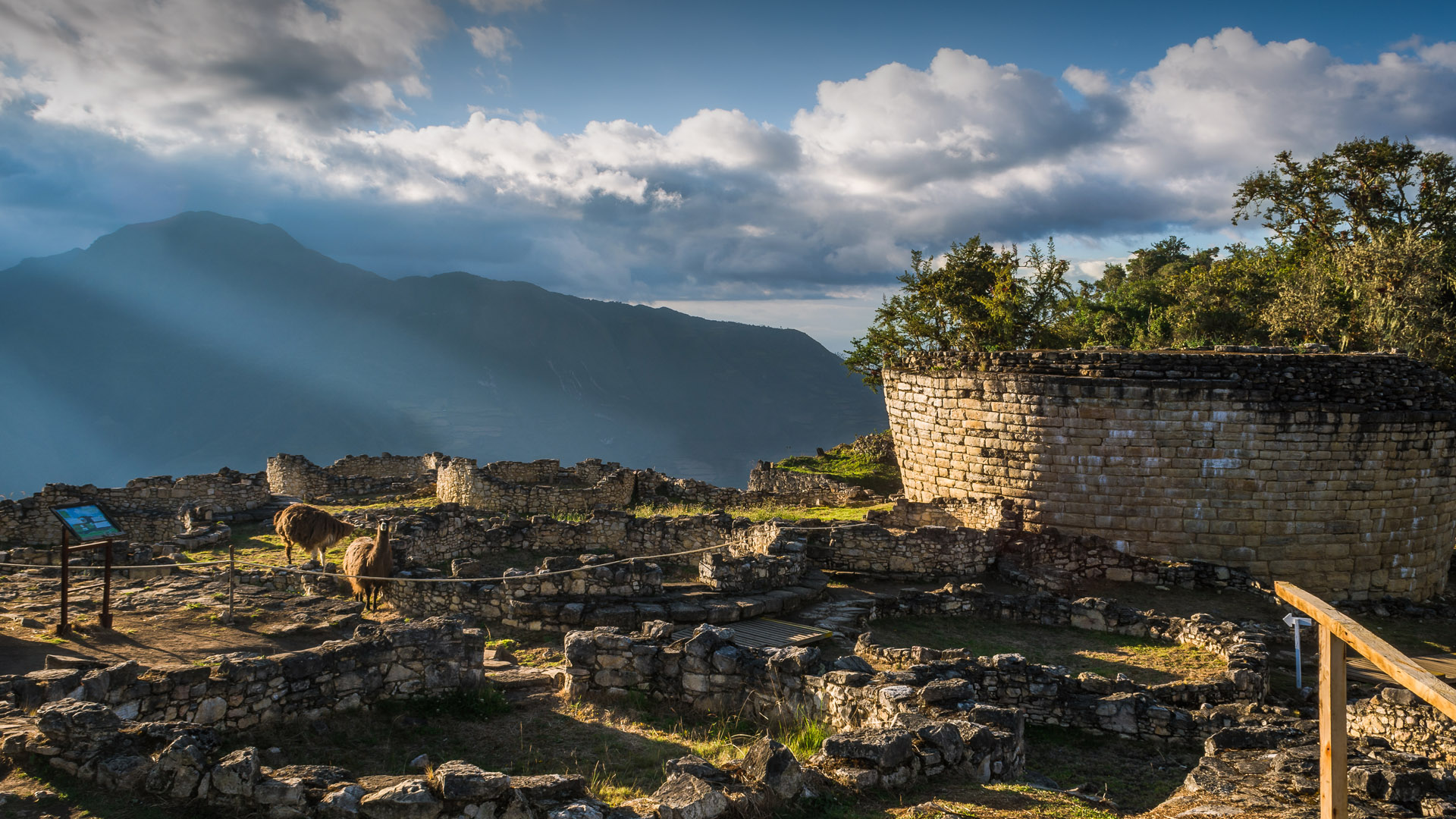
Kuelap Fortress is a remarkable archaeological site located in the remote mountains of northern Peru. This ancient fortified city is shrouded in mystery and has captivated the attention of historians, archaeologists, and travelers alike. With its towering walls, intricate stone carvings, and strategic location, Kuelap Fortress offers a glimpse into the rich and complex history of the Chachapoya culture.
In this article, we will delve into 11 astonishing facts about Kuelap Fortress that highlight its significance and allure. From its impressive size to the extraordinary engineering skills demonstrated in its construction, Kuelap Fortress is truly a marvel of ancient architecture. So, let’s embark on a journey through time and uncover the fascinating secrets of this extraordinary archaeological site.
Key Takeaways:
- Kuelap Fortress, built by the Chachapoya civilization, predates Machu Picchu by over 600 years. Its mysterious construction, hidden in the cloud forest, and astronomical alignments showcase the advanced skills and cultural significance of the ancient civilization.
- The fortress’s revival and preservation efforts have made it more accessible for travelers. Visitors can now take cable cars to explore the ancient wonders and immerse themselves in the history of the Chachapoya civilization, offering a unique alternative to the popular Inca Trail.
The Enigmatic Construction
Kuelap Fortress, located in the Amazonas Region of Peru, is an ancient archaeological site shrouded in mystery. This massive fortress, built by the Chachapoya civilization, stands on a mountaintop at an impressive elevation of 3,000 meters (9,800 feet). Its unique and intricate construction is one of the most astonishing aspects of Kuelap Fortress. The site is composed of over 400 stone structures, some towering up to 20 meters (65 feet) high, all encompassed within massive stone walls that stretch for nearly 600 meters (2,000 feet) in length. The precision and craftsmanship displayed in the intricate stonework have baffled historians and archaeologists for centuries.
Pre-Dating Machu Picchu
While Machu Picchu is often hailed as Peru’s most famous archaeological marvel, Kuelap Fortress predates it by more than 600 years. The construction of this ancient fortress began around the 6th century AD, making it one of the oldest and most significant archaeological sites in the country. Kuelap Fortress holds immense cultural and historical value, offering insights into the advanced engineering techniques and architectural prowess of the Chachapoya civilization.
Hidden in the Cloud Forest
Kuelap Fortress is nestled within the lush cloud forest of the Amazonas Region, adding to its allure and mystique. The dense vegetation surrounding the site has preserved its ancient structures, creating a captivating and immersive experience for visitors. Exploring the terraces, temples, and fortifications within this natural setting provides a glimpse into the fascinating world of the Chachapoya people and their connection to the environment.
The Sarcophagi of Chachapoya Warriors
Within the walls of Kuelap Fortress, archaeologists have discovered several sarcophagi containing the remains of Chachapoya warriors. These sarcophagi are elaborate stone carvings representing human figures with distinct facial features and intricate details. The presence of these sarcophagi deepens the understanding of the ancient rituals and burial practices of the Chachapoya civilization.
Impenetrable Defensive Wall
One of the most remarkable features of Kuelap Fortress is its towering defensive wall. Rising over 20 meters (65 feet) in certain sections, this wall served as a formidable barrier for potential invaders. Its sheer size and strategic positioning made it nearly impregnable, adding to the fortress’s reputation as an impenetrable stronghold.
Mysterious Cloud Warriors
The Chachapoya civilization, the builders of Kuelap Fortress, were known as the “Cloud Warriors” due to their strategic mountaintop locations and mastery of warfare tactics. Their ability to construct such an imposing fortress in such challenging terrain showcases their incredible skill and determination. The fortress served as a symbol of their power and resilience, guarding against rival civilizations and potential threats.
Astrological Alignment
Kuelap Fortress exhibits a remarkable understanding of astronomical alignments. Certain structures within the site are aligned with celestial events, such as the solstices and equinoxes, suggesting that the Chachapoya people had advanced knowledge of astronomy. This astronomical precision further highlights the sophistication of their culture and their deep connection to the natural world.
The Revival of Kuelap Fortress
Although Kuelap Fortress remained largely unknown until the mid-20th century, it has experienced a revival in recent years. Ongoing archaeological excavations and restoration efforts have shed light on its historical significance and attracted increasing numbers of tourists eager to explore its ancient wonders. The site’s remote location adds to its allure, providing a sense of adventure for those seeking to uncover the secrets of this hidden gem.
An Alternative to the Inca Trail
For those seeking an alternative to the popular Inca Trail, a visit to Kuelap Fortress offers a unique and awe-inspiring trekking experience. Hiking to this ancient site allows adventurers to immerse themselves in the breathtaking landscapes of the Peruvian Andes while unraveling the fascinating history of the Chachapoya civilization.
Preservation and Conservation Efforts
Recognizing the significance of Kuelap Fortress, both nationally and internationally, preservation and conservation efforts have been implemented to protect the site. These initiatives ensure that future generations can continue to explore and appreciate the ancient wonder of Kuelap Fortress, while safeguarding its cultural and historical importance.
Visiting Kuelap Fortress Today
The accessibility to Kuelap Fortress has greatly improved, making it easier for travelers to experience its grandeur firsthand. Cable cars now transport visitors up to the mountaintop, providing spectacular views of the surrounding landscape during the ascent. Once on the site, guided tours offer detailed insights into the architectural marvels, cultural significance, and ancient mysteries of Kuelap Fortress.
Conclusion
In conclusion, Kuelap Fortress is a remarkable and captivating landmark that showcases the ingenuity and architectural mastery of the ancient Chachapoya civilization. Its remote location, towering walls, and intricate stone structures leave visitors in awe of the ancient past. The fortress’s rich historical significance, stunning views, and unique cultural heritage make it a must-visit destination for anyone interested in exploring the mysteries of Peru’s ancient civilizations.
FAQs
1. How old is Kuelap Fortress?
Kuelap Fortress dates back to the 6th century AD, making it over 1,400 years old.
2. How long does it take to visit Kuelap Fortress?
A typical visit to Kuelap Fortress usually takes around 2-4 hours, depending on your level of exploration and interest in the ruins.
3. Are there any guided tours available at Kuelap Fortress?
Yes, guided tours are available at Kuelap Fortress. Hiring a guide can enhance your experience by providing insightful information about the history, architecture, and significance of the fortress.
4. Can I visit Kuelap Fortress on my own?
Absolutely! While guided tours are available, you can also explore Kuelap Fortress independently. There are well-marked trails and information boards to guide visitors throughout the site.
5. Is there an entrance fee to visit Kuelap Fortress?
Yes, there is an entrance fee to visit Kuelap Fortress. The fee helps with the maintenance and preservation of the site.
6. Is Kuelap Fortress accessible for people with mobility issues?
Kuelap Fortress is situated on a hilltop and involves some uphill walking and stairs. While it may be challenging for individuals with mobility issues, there are sections of the site that can be accessed with assistance.
7. Are there facilities such as restrooms and food stalls at Kuelap Fortress?
There are basic facilities such as restrooms and food stalls nearby for visitors to utilize during their visit to Kuelap Fortress.
8. What is the best time of year to visit Kuelap Fortress?
The best time to visit Kuelap Fortress is during the dry season, which runs from May to September. The weather is pleasant, and there are fewer chances of rainfall, making it easier to explore the ruins.
9. Is photography allowed at Kuelap Fortress?
Yes, photography is allowed at Kuelap Fortress. The stunning views and intricate details of the fortress provide ample opportunities for capturing memorable photographs.
10. Are there any accommodations near Kuelap Fortress?
Yes, there are accommodations available near Kuelap Fortress, ranging from luxury hotels to budget-friendly guesthouses, offering visitors a chance to experience the surrounding area at their own pace.
Kuelap Fortress captivates with its ancient mysteries, but Peru holds even more wonders. Machu Picchu, a renowned tourist attraction, beckons travelers from across the globe. Nestled high in the Andes Mountains, this iconic site showcases Incan ingenuity. For those seeking lesser-known marvels, Tiwanaku's enigmatic ruins in Bolivia testify to the achievements of pre-Columbian ancient civilizations. Each destination offers a unique journey through history, inviting adventurers to uncover the secrets of these extraordinary places.
Was this page helpful?
Our commitment to delivering trustworthy and engaging content is at the heart of what we do. Each fact on our site is contributed by real users like you, bringing a wealth of diverse insights and information. To ensure the highest standards of accuracy and reliability, our dedicated editors meticulously review each submission. This process guarantees that the facts we share are not only fascinating but also credible. Trust in our commitment to quality and authenticity as you explore and learn with us.


